This post contains affiliate links. If you buy something from one of our links we may earn a commission. Thanks
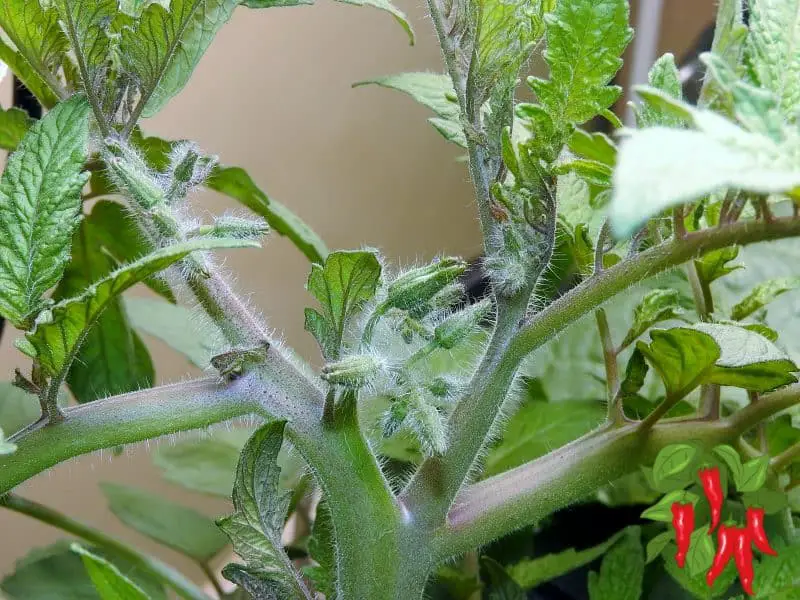
Discover the best practices for your indoor garden: Should I prune determinate tomatoes? Find out in this informative guide with expert tips!
Pruning Determant Tomatoes
Key Takeaways:
- Determinate tomatoes should not be pruned.
- Unlike pruning indeterminate tomatoes no suckers should be removed because they will bear fruit.
- Pruning will reduce yield and will not result in larger fruit.
- Determinate tomatoes need to be treated differently from indeterminate ones.
Should I Prune Determinate Tomatoes?
Are you pondering the question, Should I prune determinate tomatoes? You’re not alone!
Many gardeners are curious about the best approach to nurturing these unique plants.
In this article, we delve into the specifics of determinate tomatoes and offer valuable insights to help your indoor garden thrive.
Determinate Vs Indeterminate Tomatoes What’s The Difference?
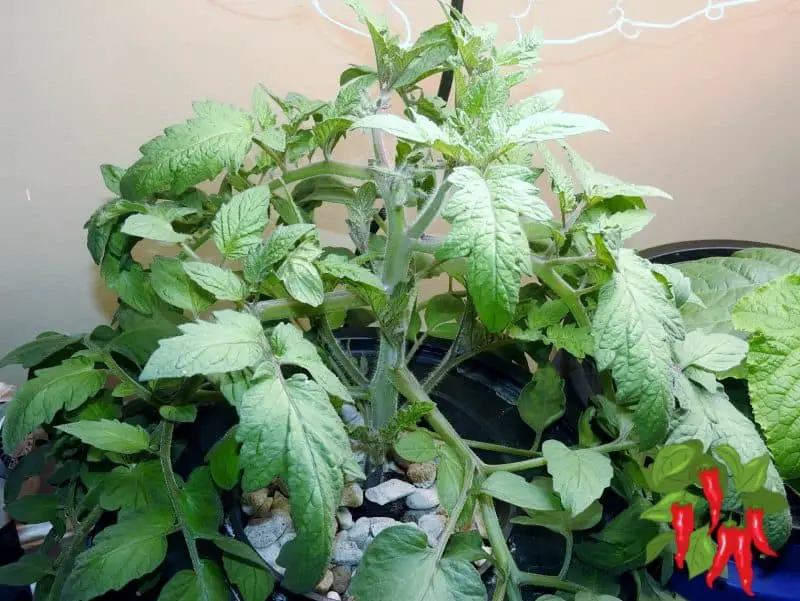
Indeterminate tomatoes are vine-like. They get very tall and produce fruit continually.
It is common practice to prune them by removing suckers. They can live for many years indoors.
Determinate tomatoes grow like a bush. They produce the bulk of their crop at the same time.
Pruning should not be done because it lowers yield. When they are done bearing the plant dies back.
Which Should You Grow?
Determinate tomatoes are ideal for growing indoors because of their smaller size.
They also produce their crop much faster than indeterminate varieties and work better for shorter growing seasons outdoors.
Indeterminate varieties are better for greenhouses where height is not much of an issue and an extended harvest period is desired.
If you garden outdoors and have a long warm growing season indeterminate varieties may be a better choice for you.
How Can You Tell If A Tomato Is Determinate Or Indeterminate?
The best way to tell what type your tomatoes are is to read your seed pack or transplant label. They will say whether your plant is determinate or indeterminate.
If you dont have this you will need to watch how your plant grows. If it has long stems and many suckers it is indeterminate but if it has a more bush like growth habit it is determinate.
Do Determinate Tomatoes Need Support?
Determinate tomatoes ripen most of their fruit over a shorter time than indeterminate ones.
Because they will have a heavy crop load they will need support.
Outdoors many people use a stake to support them. A tomato cage is a better option and you wont need to tie heavy branches up to a stake.
Indoors you can use the same methods. But if you grow DWC tomatoes you cant use a stake.
Tomato cages may not be practical for an indoor tomato garden either.
Indoors a better option might be to use trellis netting hung above your plants. Train your top through the trellis.
If lower branches cant be pulled through the net you can use plant yo yos or string to tie them up to the trellis.
Should I Pinch Off Determinate Tomato Flowers?
You should not pinch off determinate tomato flowers. Doing so will reduce your yield and will not result in larger tomatoes.
You do not want to pinch back tops or anything else when you grow determine tomatoes.
Should I Remove Suckers From Determinate Tomato Plants?
You should not remove suckers from determinate tomatoes. They will bear fruit so you would be reducing your yield if you do.
Some people say you can remove suckers that are below the first flowers but I disagree.
Plants need leaves to conduct photosynthesis. This in turn provides food for your tomatoes. More leaves means more food and tomatoes.
On a fast growing plant that ripens most tomatoes at once you will be reducing the amount of nutrients they can get.
So your tomatoes will be smaller. Instead of pruning you should do everything possible to help your plant grow larger.
How I Grow Determinate Tomatoes
Here is a video I shot in my DWC kitchen garden and today we’re going to focus on my Early Girl tomato plant in there.
It’s in deep water culture and actually everything in here is in DWC.
My tomato plant is an Early Girl determinate tomato plant and there is an indeterminate version available too.
There also is a bush cucumber, a small pepper plant and a bunch of butter crunch lettuce.
But really I want to focus on my tomato plant. I just put the leaves and branches through a trellis net.
They do look a little bit floppy and wilted but it will come back to normal in a few days.
The plant is doing well and we have a bunch of flowers up on top and eventually we’ll be seeing flowers on the lower limbs too.
DWC Roots
Here is what DWC roots look like. You can see they’re really healthy and white.
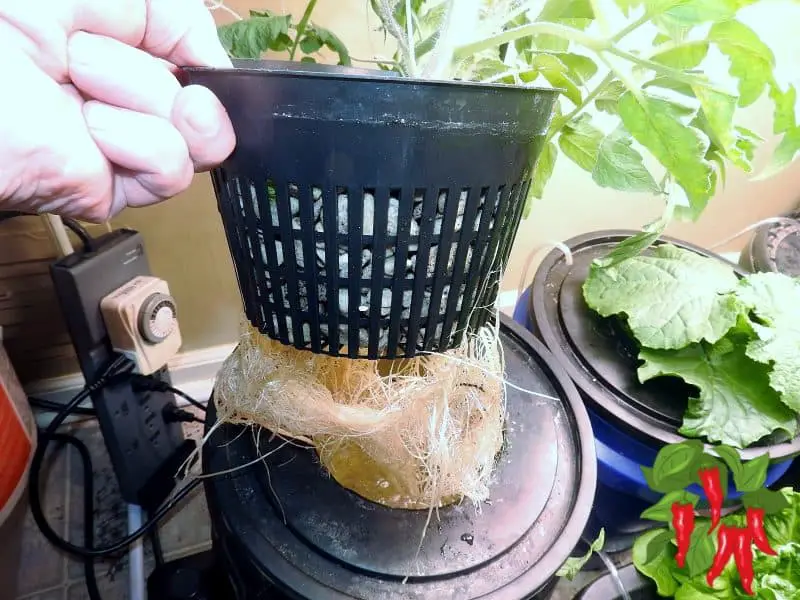
Treat Your Determinate And Indeterminate Tomatoes Differently
I’ve noticed a lot of people grew indeterminate tomatoes and when get determinant tomatoes they want to prune them the same way.
But you’re not supposed to prune determinate tomatoes. They grow totally different and need to be treated differently too.
The main difference is that determinate tomatoes grow to a certain
size and then it fruits and then it dies.
But an indeterminate tomato can actually last for two or three years if you keep everything healthy.
Also it doesn’t yield all at once like determinate varieties do. They get much taller and they’re more vine like. Here is what they look like.
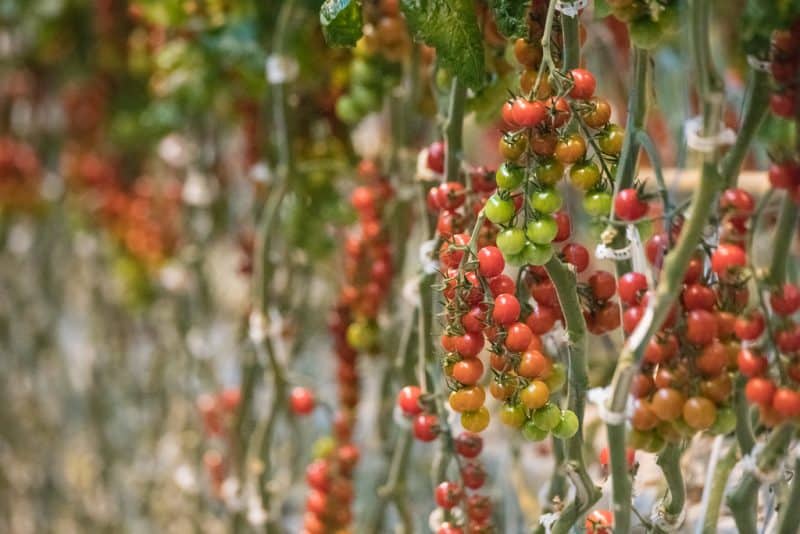
Mine was definitely a bush and determinate.

Trellising My Tomato Plant
I spread mine out because I want to make sure whatever fruit it has is supported. And now it looks like this:
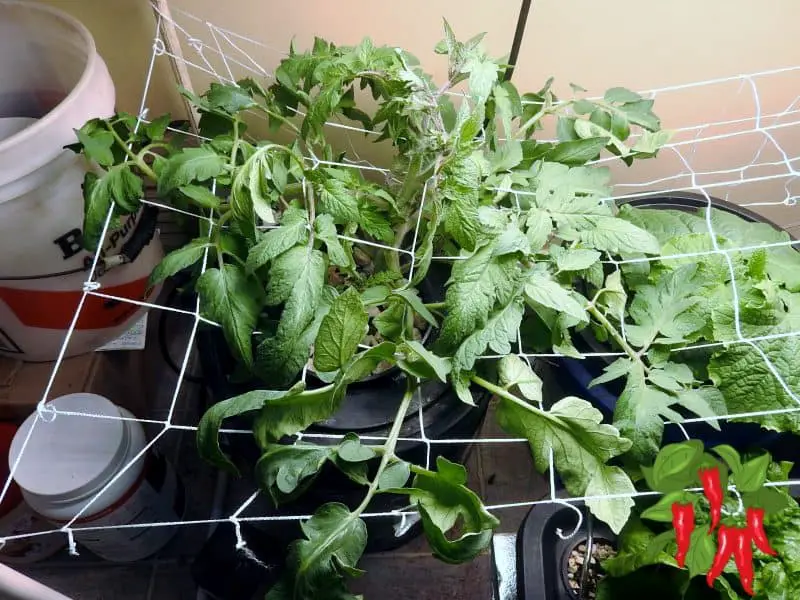
So you don’t prune these plants just let them grow as large as possible. Trellis or stake them or put them in a tomato cage.
Anything you take off is going to reduce your yield and remember they dont have an extended harvest like indeterminate varieties.
Now with indeterminate tomatoes you definitely do prune off suckers and you might remove some other growth but not on a determinate variety.
Growing Indeterminate Tomatoes Next Time
The next time I grow I will probably do an indeterminate one. They do get lot taller but actually in a way that makes them easier to train.
Setting Up A Cycle For Year Round Tomatoes
Indeterminate tomatoes yield more over time. They are longer lived than determinate plants.
This is why most greenhouse tomatoes are indeterminate varieties.
But in this grow, my situation is that I’m in an upstairs apartment without air conditioning.
It’s going to get hot during the summer and I wont be able to run DWC without a chiller to keep the water cool enough.
But I will be growing tomatoes outdoors instead of indoors by then. So this plant will flower and fruit and then be removed.
Hopefully, I will have enough tomatoes to make it until my outdoor ones start to yield.
When fall is near I will switch back to growing tomatoes indoors again. Most likely indeterminate varieties this time.
I will want a longer sustained harvest. I will be starting my plants much sooner.
My determinate plants were not even seeded until January. This year I will start indeterminate plants in September.
That should set up a growing cycle for year-round tomato production. You may need a different cycle especially if you only grow indoors.
In The Outdoor Garden
But for now, the advantage of a determinant tomato is it yields most of its crop at the same time and it also yields faster.
So because I’m in Western Washington we don’t have the best growing season in the world for tomatoes.
Although it’s long there’s not a lot of heat in it and tomatoes really require heat to grow well and get ripe without leaving a lot of green tomatoes.
And that means early determinate varieties are the best type of plant for that kind of garden.
Because we just don’t have a long enough growing season to take full advantage of an indeterminate variety.
In My Kitchen Garden
This Early Girl determinate tomato plant was started from seed and set in DWC as a small transplant about three or four inches tall.
Right now it’s about four or five weeks old from when I set it in so in another month I should have tomatoes, hopefully.
But I really wanted to show you the plant before and after trellising. I will continue to update when it has fruit.
Determinate Vs Indeterminate Examples
In my pictures, you will notice one plant was fairly short and bush-like and another was tall with clusters of tomatoes hanging down.
That’s how you can tell a determinate tomato from an indeterminate. If you have a plant that grows like a bush it’s a determinate tomato and you don’t prune it.
But if you have a plant that’s tall and grows a lot of long stems and has a lot of suckers coming out of it it’s indeterminate in that case you would want to remove a lot of the suckers.
And you would want to stake those branches up to keep them off the ground.
The next time I grow in here it will be fall and I will probably choose an indeterminate variety because tomatoes from outside will hold me over until it bears.
But for now, I’m going to grow this Early Girl until my outdoor tomatoes bear.
I am trying to get the cycle right so my outdoor tomatoes start bearing when my indoor ones are done.
That way I can have fresh tomatoes year round.
Give DWC Tomatoes a Try
So here is some food for thought on growing determinate tomato varieties in DWC hydroponics.
As I said this deep water culture setup is easy to do. It’s just a five-gallon bucket with an air stone in it.
A tomato transplant is set into a pot of hydroton and put into a hole cut in the bucket lid. So, there’s really not very much to it.
Changing Nutrients In DWC
One thing that could be a problem after trellising like I just did or using a tomato cage is getting in to refill the buckets.
You will need to top up your buckets periodically. Also, it’s a good idea to mix a batch of fresh nutrients every 2 weeks for your plants.
I have a pump that I can use for that. I can drop the pump in and pump all the water out of the bucket and into a spare bucket.
Then I can feed that to my regular house plants and then refill the bucket with fresh nutrients and pump those back in so it’s not really complicated.
Anyhow that’s my little spiel on determinate tomatoes indoors in hydro.
No dirt in your house and you get faster growth and a higher yield. If you’re growing indoors by all means try DWC.
It works great for tomatoes or peppers. If you’re growing outdoors you’ll probably be in soil or you can grow in pots and use coco coir and you’ll still get better results than growing in soil.
Here is another article with some more information on determinate and indeterminate tomatoes.
Should I Prune Determinate Tomatoes Conclusion
In conclusion, when it comes to determinate tomatoes, less is more in terms of pruning. Here’s a quick recap:
Key Takeaways: Should I prune determinate tomatoes?
- No, you should not prune determinate tomatoes.
- Pruning can actually decrease your overall yield and won’t result in larger fruit.
- Unlike indeterminate varieties, determinate tomatoes produce fruit from all of their stems, so removing any part can lessen your harvest.
1. Pruning: Less is More
- Avoid Pruning: Pruning determinate tomatoes can significantly reduce your harvest. These plants are designed to produce fruit on all of their stems, so cutting any part of them can lead to a decrease in the overall yield.
- Maximize Fruit Production: By allowing the plant to grow naturally, you ensure that every possible flower has the chance to turn into a fruit, maximizing your harvest.
2. Understanding Growth Patterns
- Bush-like Growth: Determinate tomatoes have a unique, compact growth pattern resembling a bush. This makes them ideal for smaller spaces or indoor gardens.
- Concentrated Harvest: Unlike indeterminate varieties, determinate tomatoes tend to produce their entire crop over a shorter period. This is great for gardeners looking for a singular, bountiful harvest.
3. Support Structures are Key
- Staking and Trellising: Despite their bushy nature, determinate tomatoes can benefit from support structures like stakes or trellises, especially when laden with fruit.
- Prevent Plant Damage: Proper support helps prevent branches from breaking under the weight of the fruit and keeps the fruit off the ground, reducing the risk of rot and pest infestations.
4. Different Care for Different Varieties
- Treat Varieties Differently: It’s crucial to understand that determinate and indeterminate tomatoes have different needs. Applying the same care techniques to both can lead to suboptimal results.
- Tailored Approaches: While determinate tomatoes thrive with minimal interference, indeterminate varieties may require more regular pruning and training.
5. Consider Your Growing Environment
- Indoor vs. Outdoor Growing: The choice between determinate and indeterminate tomatoes should also factor in your growing environment. Determinate varieties are often more suitable for indoor or small-space gardens.
- Climate and Season Length: If you’re gardening outdoors, consider your local climate and the length of your growing season. Shorter seasons may favor the quicker, more concentrated production of determinate tomatoes.
By keeping these points in mind and treating your determinate tomatoes with the care they need, you can look forward to a healthy, abundant crop.
Remember, understanding the specific requirements of your plants is key to successful gardening, whether indoors or outdoors.





